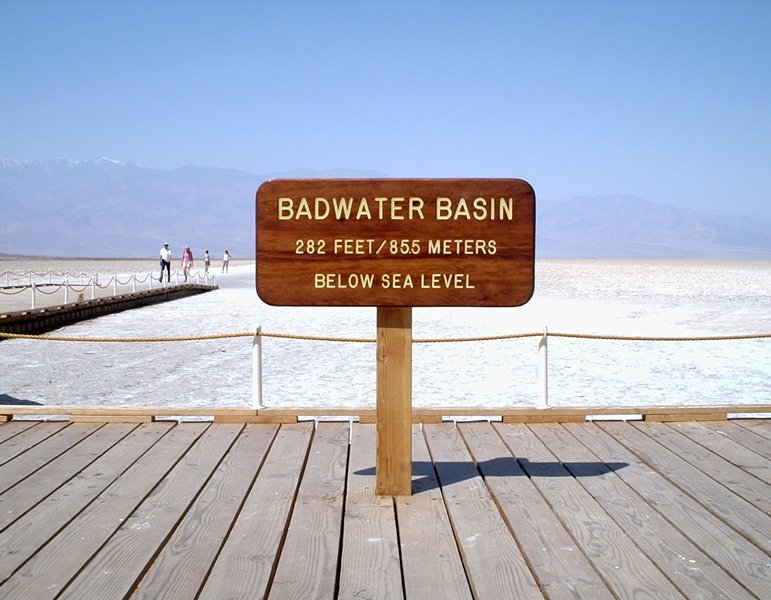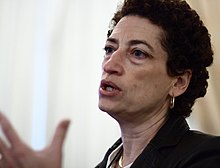Last September, the Cabot Institute and the University of Bristol hosted the 2nd International Workshop on Pliocene Climate. Following on from that, we have just released a short video describing what the Pliocene is and its relevance for understanding climate change.
The Pliocene is a geological time interval that occurred from 5.3 to 2.6 million years ago. This interval of Earth history is interesting for many reasons, but one of the most profound is that the Earth’s atmosphere apparently contained elevated concentrations of carbon dioxide – in fact, our best estimates suggest concentrations were about 300 to 400 ppm, which is much higher than concentrations of 100 years ago but lower than those of today after a century of intensive fossil fuel combustion.
 |
| Image by NASA |
Consequently, the Pliocene could provide valuable insight into the type of planet we are creating via global warming. Our video release happens to coincide with pronounced flooding across the UK and focussed attention on our weather and climate. There is little doubt that increased carbon dioxide concentrations will cause global warming; instead, the key questions are: how much warming will there be and what are the consequences of that warming? One way to study that is to examine previous intervals of Earth history also characterised by high carbon dioxide concentrations. The comparisons are not perfect, of course; for example, during the Pliocene the continents were in roughly but not exactly the same positions that they are in today. But it can serve as another piece of the puzzle in predicting future climate.
One of the key lessons from Earth history is climate sensitivity. Climate sensitivity can be expressed in various ways, but in its simplest sense it is a measure of how much warmer the Earth becomes for a given doubling of atmospheric carbon dioxide concentrations. This is well known for the Pleistocene, and especially the past 800,000 years of Earth history, an interval with detailed temperature reconstructions and carbon dioxide records from ice core gas bubbles. During that time, and through multiple ice ages, climate sensitivity was about 2.5 to 3°C warming for a doubling of carbon dioxide, which is in the middle of the model-based range of predictions.
.jpg/800px-Ice_Core_Vitals_(5433412179).jpg) |
| Ice core sampling. Image by NASA ICE (Ice Core Vitals) [CC-BY-2.0] Wikimedia Commons |
Ice core records, however, extend back no more than a million years, and this time period is generally characterised by colder climates than those of today. If we want to explore climate sensitivity on a warmer planet, we must look further back into Earth history, to times such as the Pliocene. Reconstructing atmospheric carbon dioxide concentrations in the absence of ice cores is admittedly more challenging. Instead of directly measuring the concentration of carbon dioxide in gas bubbles, we must rely on indirect records – proxies. For example, carbon dioxide concentration influences the number of stomata on plant leaves, and this can be measured on ancient leaf fossils. Alternatively, there are a number of geochemical tools based on how carbon dioxide impacts the pH of seawater or how algae assimilate carbon dioxide during photosynthesis; these are recorded by the chemical composition of ancient fossils.
These estimates come with larger error bars, but they provide key insights into climate sensitivity on a warmer Earth. Recent research indicates a convergence of Pliocene carbon dioxide estimates from these various proxies and gives us more confidence in deriving climate sensitivity estimates. In particular, it appears that an increase of carbon dioxide from about 280 parts per million (the modern value before the industrial revolution) to about 400 parts per million in the Pliocene results in a 2°C warmer Earth. Accounting for other controls, this suggests a climate sensitivity of about 3°C, which confirms both the Pleistocene and model-based estimates.
It also suggests that we have yet to experience the full consequences of the greenhouse gases already added to the atmosphere.
So then, what was this much warmer world like? First of all, it was not an inhospitable planet – plants and animals thrived. This should not be a surprise; in fact, the Earth was much warmer even deeper into the past. The climate change we are inducing is a problem for humans and society, not our planet.
However, the Pliocene was a rather different world. For example – and importantly, given current events in the UK – these higher global temperatures were associated with a climate that was also wetter* than present. That provides important corroborating evidence for models that predict a warmer and wetter future.
 |
| Image by w:en:User:Ivan and licensed as GFDL |
Perhaps most striking, sea level appears to have been between 10 to 40 metres higher than today, indicating that both the Greenland Ice Sheet and Antarctic Ice Sheet were markedly smaller. To put that into context, the Met Office has already commented on how flooding in the UK has been and will be exacerbated by sea level rise of 12 centimetres over the last 100 years and a further 5 to 7 centimetres by 2030.
We must be careful in how we extract climate lessons from the geological record, and that is particularly true when we consider ice sheet behaviour. One widely discussed concept is ice sheet hysteresis. This is a fancy way of saying that due to feedback mechanisms, it could be easier to build an ice sheet on Greenland or Antarctica than it is to melt one. If such hysteresis does stabilise our current ice sheets, then we should not assume a planet with 400 ppm of carbon dioxide will necessarily have sea level 20 metres higher than that of today. But if hysteresis is rather weak, then the question is not whether we will see massive sea level change but rather how long it will take (Note: It is likely to take centuries or millennia!).
Most importantly, the collective research into Earth history, including the Pliocene, reveals that Earth’s climate can change. It also reveals that climate does not just change randomly: it changes when forced in relatively well understood ways. One of these is the concentration of carbon dioxide in our atmosphere. And consequently, there is little doubt from Earth history that transforming fossil carbon into carbon dioxide – as we are doing today – will significantly impact the Earth’s climate system.
* See Brigham-Grette, J., Melles, M., Minyuk, P., Andreev, A., Tarasov, P., DeConto, R., Koenig, S., et al., 2013. Pliocene Warmth, Polar Amplification, and Stepped Pleistocene Cooling Recorded in NE Arctic Russia. Science 340 (6139), 1421-1427. doi: 10.1126/science.1233137 and Salzmann, U., Haywood, A.M., Lunt, D.J., 2009. The past is a guide to the future? Comparing Middle Pliocene vegetation with predicted biome distributions for the twenty-first century. Philosophical Transactions of the Royal Society A: Mathematical, Physical and Engineering Sciences 367 (1886), 189-204.
This blog is by Prof Rich Pancost, Director of the Cabot Institute. Rich will be giving a public lecture on how biogeochemical cycles have regulated the global climate system throughout Earth’s history on 25 February in Bristol. The event is free and open to all, do come along to learn more.
To learn more about the Pliocene – and palaeoclimate research, in general – you can watch Professor Gerald Haug’s public lecture, Climate and Societies, recorded at the Cabot Institute as part of the 2nd International Workshop on Pliocene Climate.
 |
| Prof Rich Pancost |







